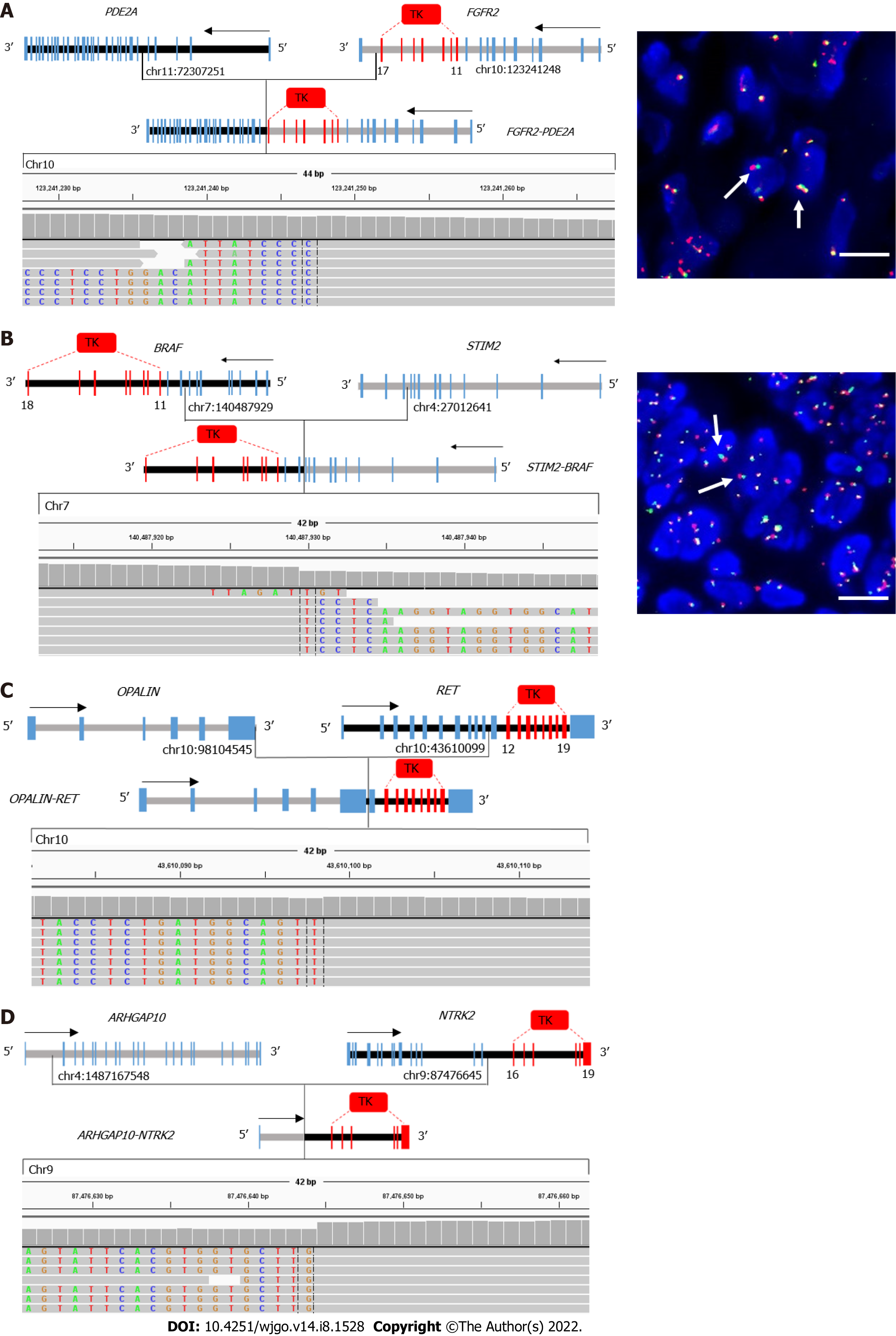Copyright
©The Author(s) 2022.
World J Gastrointest Oncol. Aug 15, 2022; 14(8): 1528-1539
Published online Aug 15, 2022. doi: 10.4251/wjgo.v14.i8.1528
Published online Aug 15, 2022. doi: 10.4251/wjgo.v14.i8.1528
Figure 3 Examples of novel gene fusions involving targetable genes in gastric cancer.
A-D: Schematic representation and Integrative Genomics Viewer screenshot of FGFR2-PED2A (A), STIM-BRAF (B), OPALIN-RET (C), and NTRK2-ARHGAP10 (D) are shown; A and B: FGFR2 and BRAF fusions were confirmed by fluorescence in situ hybridization using FGFR2 (10q26) or BRAF (7q34) break-apart probes. Red spot: 5′ Probe signal; Green spot: 3′ probe signal; Yellow spot: Target gene without rearrangement. Arrows indicate the cells with separate 5′ (red) and 3′ (green) signals. Bar: 100 μm. TK: Tyrosine kinase domain.
- Citation: Liu ZH, Zhu BW, Shi M, Qu YR, He XJ, Yuan HL, Ma J, Li W, Zhao DD, Liu ZC, Wang BM, Wang CY, Tao HQ, Ma TH. Profiling of gene fusion involving targetable genes in Chinese gastric cancer. World J Gastrointest Oncol 2022; 14(8): 1528-1539
- URL: https://www.wjgnet.com/1948-5204/full/v14/i8/1528.htm
- DOI: https://dx.doi.org/10.4251/wjgo.v14.i8.1528









